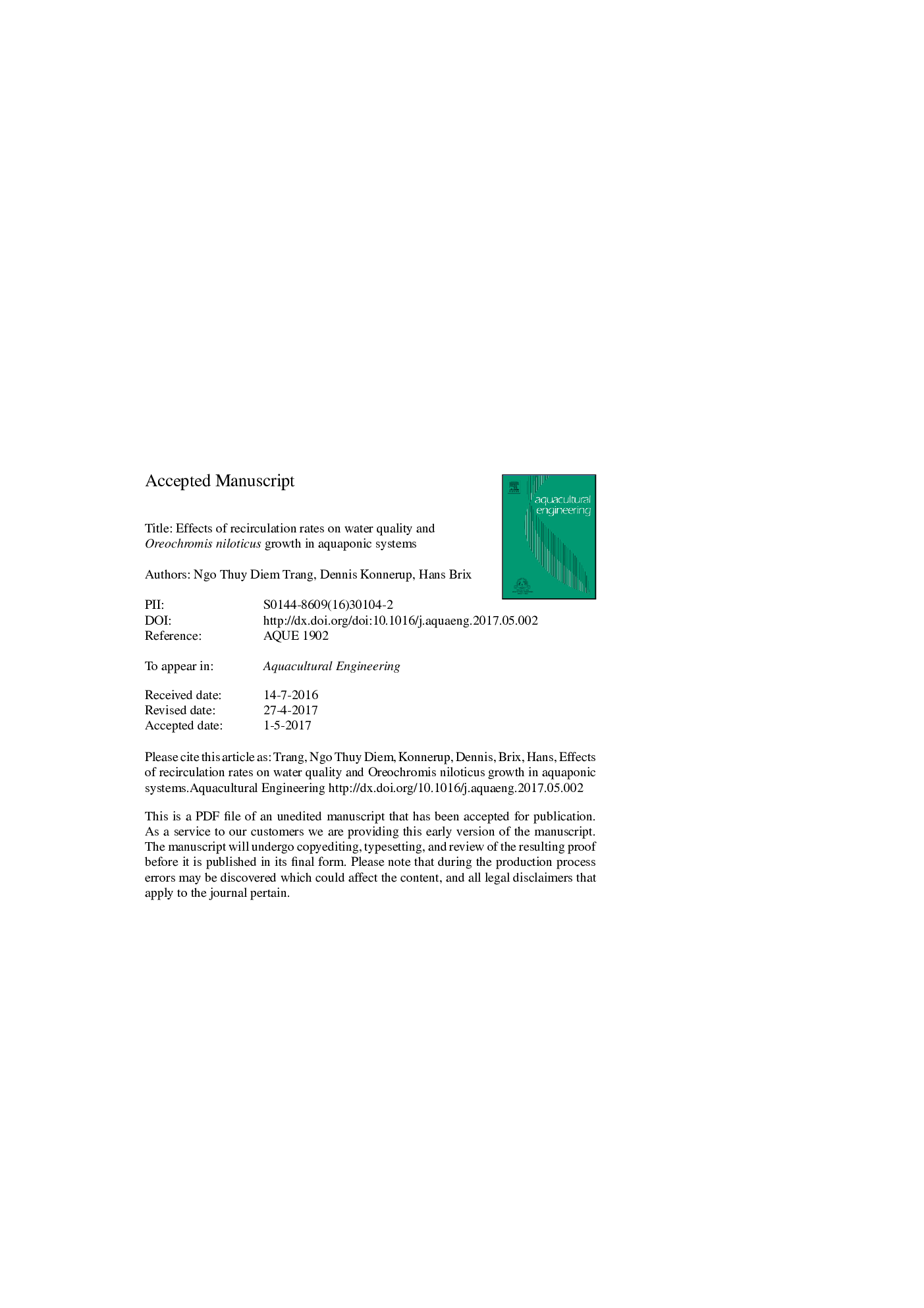| Article ID | Journal | Published Year | Pages | File Type |
|---|---|---|---|---|
| 5763899 | Aquacultural Engineering | 2017 | 23 Pages |
Abstract
The present study examined the effects of three recirculation rates (50%, 200% and 400%) on water quality and biomass growth at low and high fish stocking densities (122 and 220 fish/m3) in aquaponic systems. The system consisted of a Tilapia tank connected to a gravel filter and three hydroponic trenches in series with Ipomoea aquatica, Lactuca sativa and Canna glauca. The RRs influenced most water quality parameters with best water quality at the high RR. At the low RR of 50% mass mortality of fish occurred due to lack of oxygen. The fish growth and survival was excellent in the high RR of 400% at the low fish density of 122 fish/m3. The plant trenches were found to be effective in removing potential harmful concentrations of NH4-N and NO2-N from the recirculating water. For each kg of fish produced in this system approximately 1.0Â m3 water was needed. During a 25-day period about 1Â kg of marketable fresh biomass of I. aquatica and 270Â g dry weight aboveground biomass of C. glauca was produced. It is concluded that high recirculation rate of the water of 200-400% per day is needed to secure a good growth and a low FCR of Tilapia in aquaponic systems. High recirculation rates also secure a good water quality. The aquaponic system has a very low effluent discharge compared to traditional aquaculture techniques, and it recycles nutrients for plant growth. Hence, aquaponic system is a promising sustainable solution that can be applied on commercial fish pond scale.
Related Topics
Life Sciences
Agricultural and Biological Sciences
Aquatic Science
Authors
Ngo Thuy Diem Trang, Dennis Konnerup, Hans Brix,
